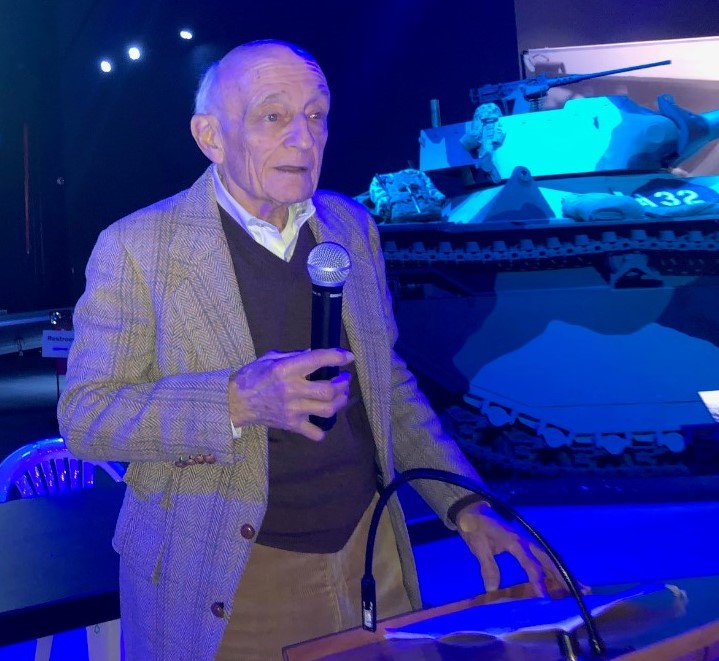- Email Norman
- P.O. Box 38, Millwood, VA 22646
The Author
About Norman Fine
Norman Fine is happy to speak to groups about his book, Blind Bombing: How Microwave Radar Brought the Allies to D-Day and Victory in World War II.
Email the author if you wish to schedule a talk or book signing for your institution or book club.

Engineer, Editor, World War II Educator
Norman Fine is a retired electronics engineer, founder of a high-tech company, former editor and publisher of an annual engineering design guide series , and author of four books and hundreds of articles on horse sport published in the U.S. and Britain.
Fine’s Education & Early Career
Norman Fine is a graduate of Dartmouth College and Dartmouth’s Thayer School of Engineering.
He and an associate started an engineering company that designed and manufactured precision radar and infrared displays scopes for aerial
reconnaissance by the Air Force and Navy during the Cold War. For NASA’s Apollo 11 mission, the company designed and built the electronic displays that constructed the live imagery of Neil Armstrong’s descent from the lunar module and man’s first steps on the moon’s surface. TV cameras that were pointed at the company’s displays broadcast the imagery live to all corners of the globe. A second company was formed to publish engineering design guides for early flat panel display technologies.
Fine has written several books and hundreds of articles published here and abroad on horse sports. Blind Bombing is his first book on military history.
Fine’s engineering career in electronic display technologies opened his eyes to the origins of radar and to Britain’s little-known secret invention at the outset of World War II that gave the Allies enormous tactical advantages.
Discovering the Fine Family History
Fine’s interest in radar led him to the discovery that his uncle, Captain Stanley Fine, had been one of the pioneers in the use of radar as an offensive weapon of war. Uncle Stan, then a Lieutenant, had been selected to bring the first production model of the Mickey radar to England to begin his combat tour with the Eighth Air Force.
“I was a Mickey operator,” he told his astonished nephew, who was already planning to write a book about this little-known chapter of WWII history that rescued the D-Day invasion. Uncle Stan’s experiences add a personal and authentic character to the story.
After more than thirty missions leading the bomber wings to targets hidden under the persistent overcast and dropping the first bombs and marker flares for the bombers behind, Captain Fine returned home with decorations that included two Distinguished Flying Crosses.
The Creation of Blind Bombing
With access to a decorated warrior who pioneered the implementation of microwave radar as an offensive weapon before and after D-Day and the former Radiation Lab scientist who designed the Mickey radar, Fine had all the information he needed to tell this remarkable story.
"D-Day from the Air" Interview
Available for streaming on Warfare by History Hit
Commemorating the anniversary of D-Day, June 6, 1944.
